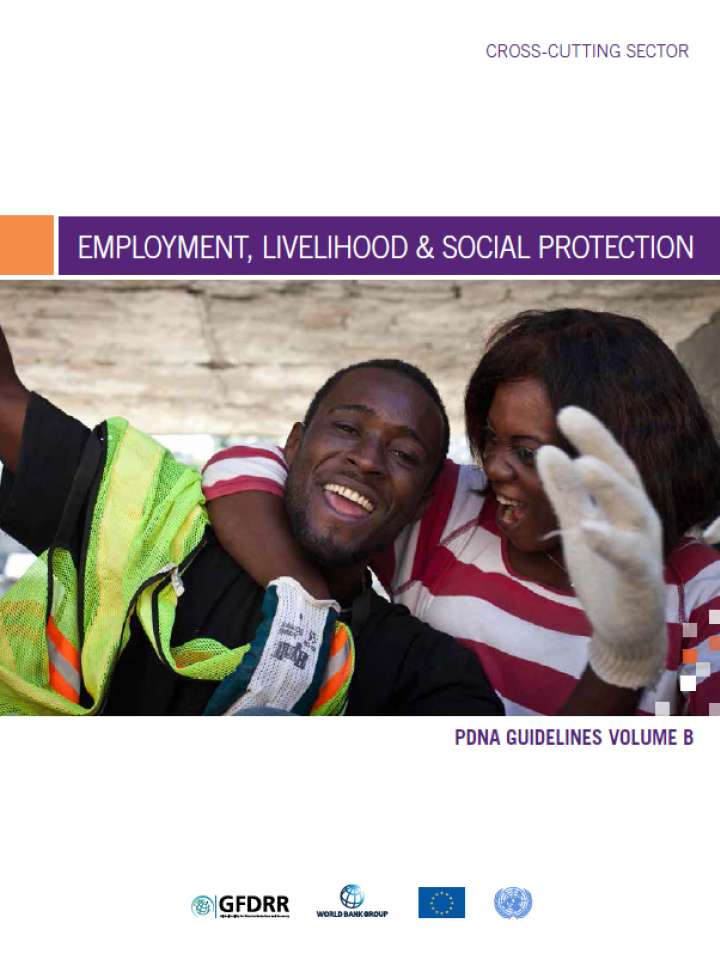Post-disaster needs assessments guidelines: Volume B - Employment, Livelihood and Social Protection
This chapter provides general guidance on conducting post-disaster needs assessment (PDNA) and recovery planning for Employment, Livelihoods and Social Protection (ELSP). It outlines how to assess and estimate the effects and impact of disasters on ELSP and provides recommendations for reactivating economic activities and employment for recovery of livelihoods.
ELSP is an issue for consideration across the social and productive sectors of an economy or society. It is the expression of all productive sectors from a household perspective, as the means of making a living and earning an income. Therefore, disasters have an impact on ELSP, and are often manifested through disaster's effects on economic sectors where people are employed and make a living. As such, this chapter focuses specifically on the impact of disasters on ELSP, with the understanding that an assessment of ELSP is interlinked with the assessment of other sectors.
Disasters destroy or cause harm to people’s livelihoods. Disasters deprive people of their jobs, or reduce their ability to raise income, and thus diminish (permanently or temporarily) their capacity to make a living. Emergency relief helps households to survive in the first stages, but soon an urgent priority is to get people back to work, to promote economic recovery and to reconstruct or replace affected livelihoods. Apart from its obvious economic functions, the reactivation of disaster-stricken economies facilitates the transition from emergency relief to recovery and restores people’s dignity through allowing them to again make a living and contribute to society.
This volume is available in English, French, and Russian languages.

